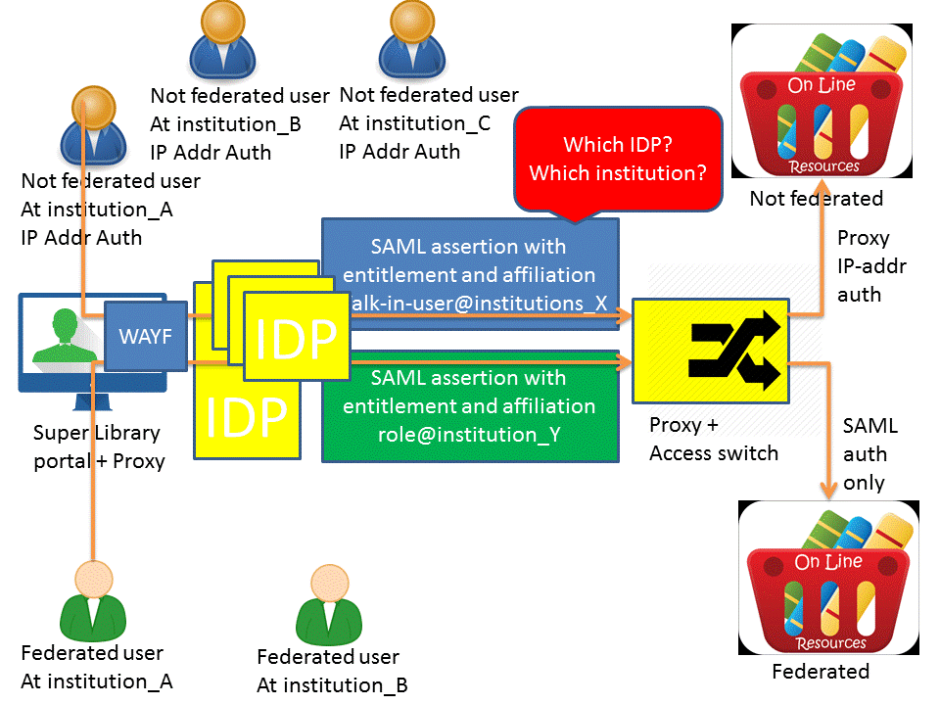...
This subtasks deals with the pilots for Libraries. We distinguish three types of pilots to be addressed:
- The high level goal of this pilot is to involve end-users (Libraries) in the identification and hands-on implementation of relevant solutions to support their migration from IP-based authentication against publishers' online resources to the SAML (federated) approach: A library might have in place its federated IDP to authenticate users against, and be willing to access both federated and non federated SPs through an SSO-proxy.
- Libraries will have to access both SAML-resources and non-SAML ones; more over, they might make use of contracts in place already with publishers relying on IP-based AuthN, and be willing to access both kind of resources (SAML & non-SAML). Therefore also the case of accessing SAML-resources (SPs) by providing to them attributes released in the base of the IP address is a relevant option for a use case to be demonstrated as a high-level goal for this pilot.
- A third high level goal is to evaluate the possibility to demonstrate the use case of a proxy portal in place for many libraries to be willing to access resources based on IP based Authentication.
The use case
- To date, many library resources like journals and tools are not accessible with an institutional account. To restrict access to such resources, libraries still rely on ip-address based access control
- Libraries need to maintain the correct ip-address ranges themselves but regard this approach as too labor intensive and inaccurate
- Users are confronted with inconsistent and confusing (if-this- than-that) user interfaces
- Often, citizen scientists are not affiliated with an institution and lack a verified institutional account to obtain access to restricted library sources
Proposed and piloted solutions to address these issues
- We established a proxy to be used by libraries to give access to restricted content no matter whether the (content) provider supports SAML or not. This approach is not new and offered as a solution called EZ-proxy but apparently many libraries are not aware of its existence
- By adding functionality to handle access requests from walk-in users (citizen scientists) we can kill two birds with one stone
- At the same time a proxy provides clues for "branding" of the access gateways e.g. the national library organisation...
This resulted in the following setup
A more detailed description of the first part of the pilot (SAML-IPaddress bridge) is available here: EZ proxy as Federated Access Mode Switch - Guide for Libraries
A descriptions of the work that concerns the walk-in user topic will follow soon.
